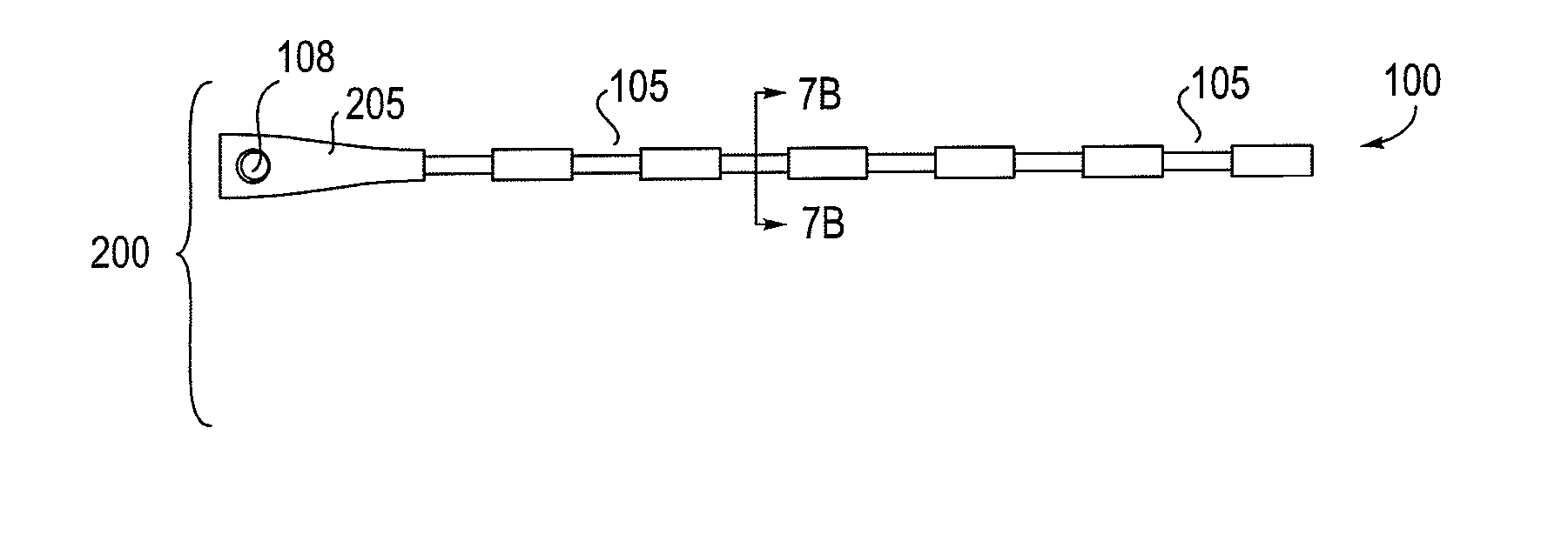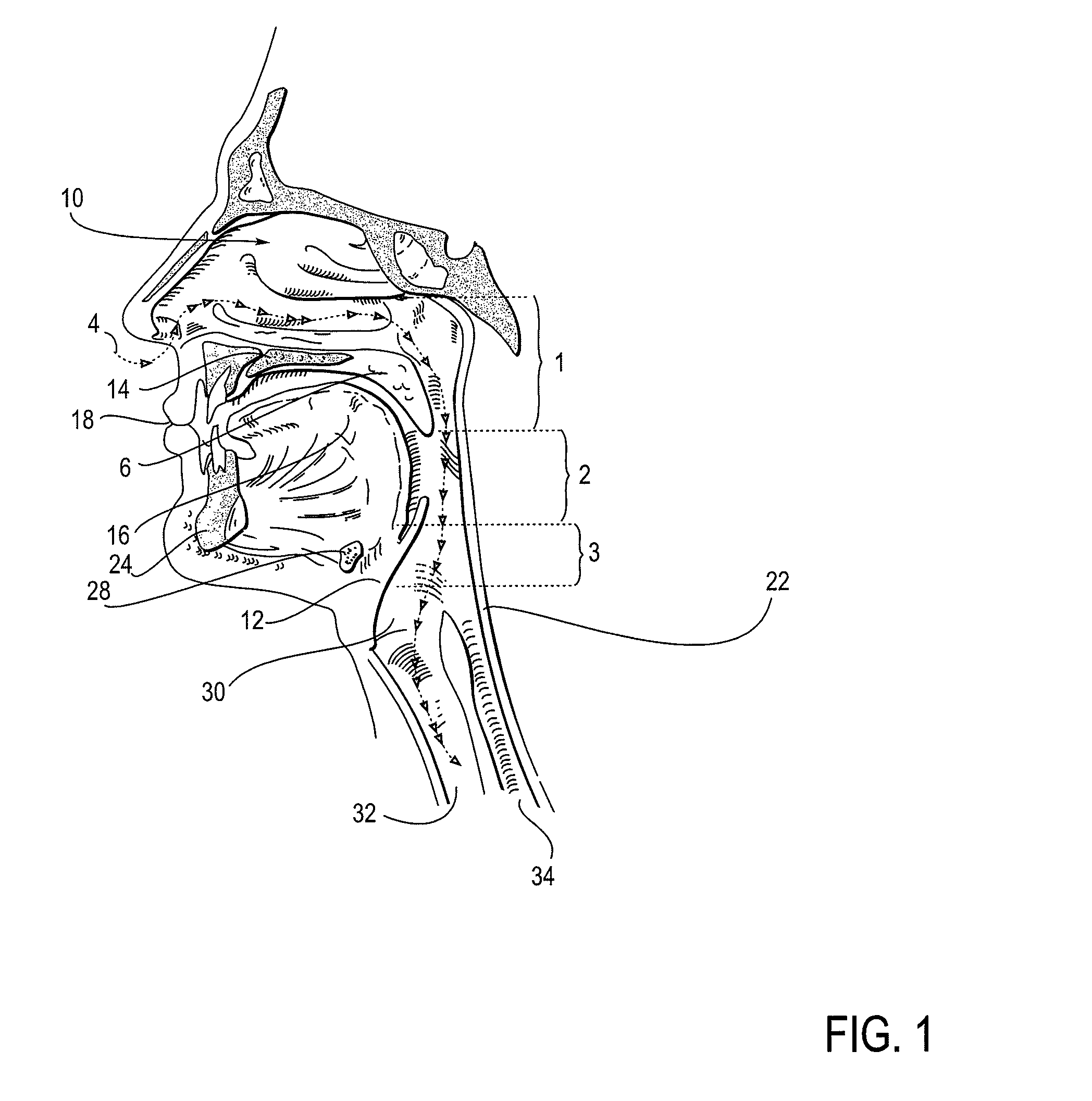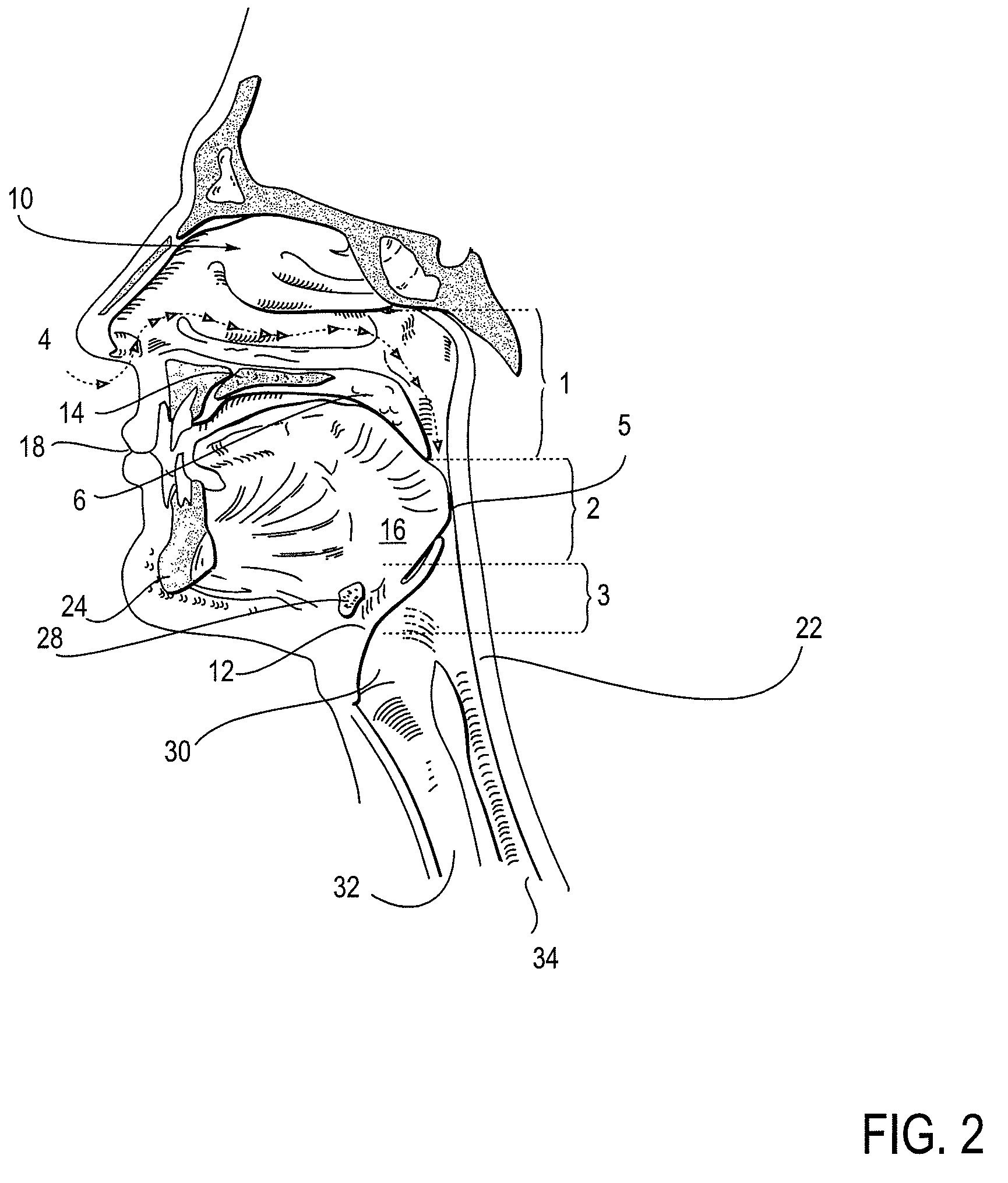Partially erodable systems for treatment of obstructive sleep apnea
a technology of obstructive sleep apnea and parts eroding, which is applied in the field of open airway, can solve the problems of reducing unobstructed airway, and obstructive collapse, so as to reduce the tendency to collapse during sleep, reduce the frequency of apneic events, and prevent obstructive collapse.
- Summary
- Abstract
- Description
- Claims
- Application Information
AI Technical Summary
Benefits of technology
Problems solved by technology
Method used
Image
Examples
Embodiment Construction
[0048]FIG. 1 is a sagittal view of the structures that form the pharyngeal airway 4; some of these structures can become compromised under various conditions to the extent that they obstruct or occlude passage of air through the airway 4, and thus contribute to obstructive sleep apnea. The pharynx is divided, from superior to inferior, into the nasopharynx 1, the oropharynx 2 and the hypopharynx 3. Variations of FIG. 1 are provided in FIGS. 2, 3, and 4, which depict airway obstruction sites 5 at various levels in the pharyngeal airway. FIG. 2, for example, shows an occlusion 5 at the level of the oropharynx 2, where the base of the tongue 16 and a thickened posterior pharyngeal wall 22 have collapsed against each other. FIG. 3 shows an occlusion 5 at the level of the nasopharynx 1, where an elongated and / or floppy soft palate has collapsed against a thickened posterior pharyngeal wall. FIG. 4 shows an occlusion 5 at the level of the hypopharynx 3, where both...
PUM
 Login to View More
Login to View More Abstract
Description
Claims
Application Information
 Login to View More
Login to View More - R&D
- Intellectual Property
- Life Sciences
- Materials
- Tech Scout
- Unparalleled Data Quality
- Higher Quality Content
- 60% Fewer Hallucinations
Browse by: Latest US Patents, China's latest patents, Technical Efficacy Thesaurus, Application Domain, Technology Topic, Popular Technical Reports.
© 2025 PatSnap. All rights reserved.Legal|Privacy policy|Modern Slavery Act Transparency Statement|Sitemap|About US| Contact US: help@patsnap.com



